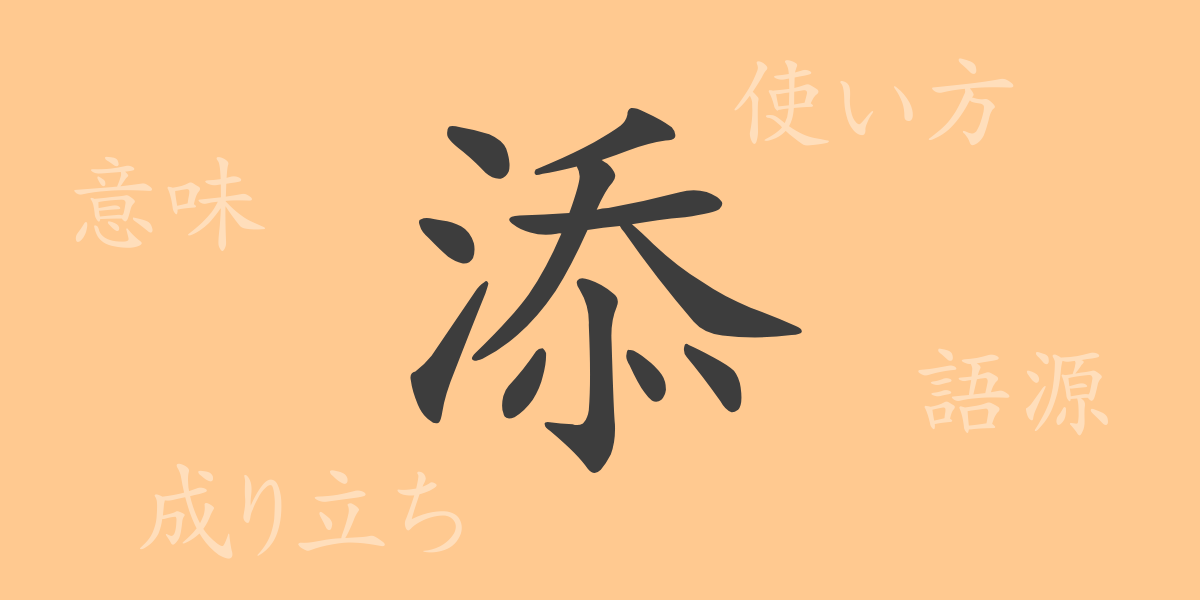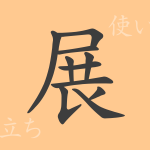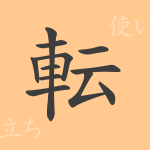The meaning of each kanji character is deeply rooted in its shape and history, and the Japanese common kanji ‘添(テン)’ is no exception. Used in various aspects of daily life, this character is familiar to many. This article delves into the allure of ‘添’, exploring its origins, meanings, usages, and its presence in various idioms and phrases.
Origins of ‘添(テン)’
The kanji ‘添’ evolved from ancient Chinese pictographs. Originally, it combined the ‘辵’ radical, indicating a path by the side, with the ‘氵’ radical, representing water, symbolizing something added along the flow of water. Over time, it has come to be used more broadly to mean ‘adding’ in various contexts.
Meaning and Usage of ‘添(テン)’
‘添’ carries meanings such as ‘to add’, ‘to accompany’, and ‘to snuggle up’. It is commonly used to describe the act of adding something or the state of two items being closely connected. In sentences, it appears in phrases like ‘意見に添う(いけんにそう)’ (to agree with an opinion) and ‘枕を添える(まくらをそえる)’ (to add a pillow).
Readings, Stroke Count, and Radical of ‘添(テン)’
Understanding the readings and structure of ‘添’ is also useful:
- Readings: On’yomi is ‘テン’; Kun’yomi includes ‘そ・える’ and ‘そ・う’.
- Stroke count: 11 strokes.
- Radical: Its main radical is ‘水’ (water), but it also includes the ‘辵’ shape.
Phrases and Proverbs Using ‘添(テン)’
‘添’ is featured in many idioms and phrases, enhancing the expressiveness of Japanese:
- 添削(てんさく): The act of correcting texts or essays.
- 添乗員(てんじょういん): A tour conductor who takes care of travelers.
- 夜を添いて考える(よるをそいてかんがえる): To think about something all night long.
- 寄り添う(よりそう): To be close side by side or to share one’s feelings closely.
Conclusion on ‘添(テン)’
The kanji ‘添’ is versatile, deriving from the basic meaning of adding, and is used in various situations. In Japanese, it enables richer expressions through its idioms and phrases. We hope this article deepens your understanding of ‘添’ and enhances your ability to use it appropriately.

























